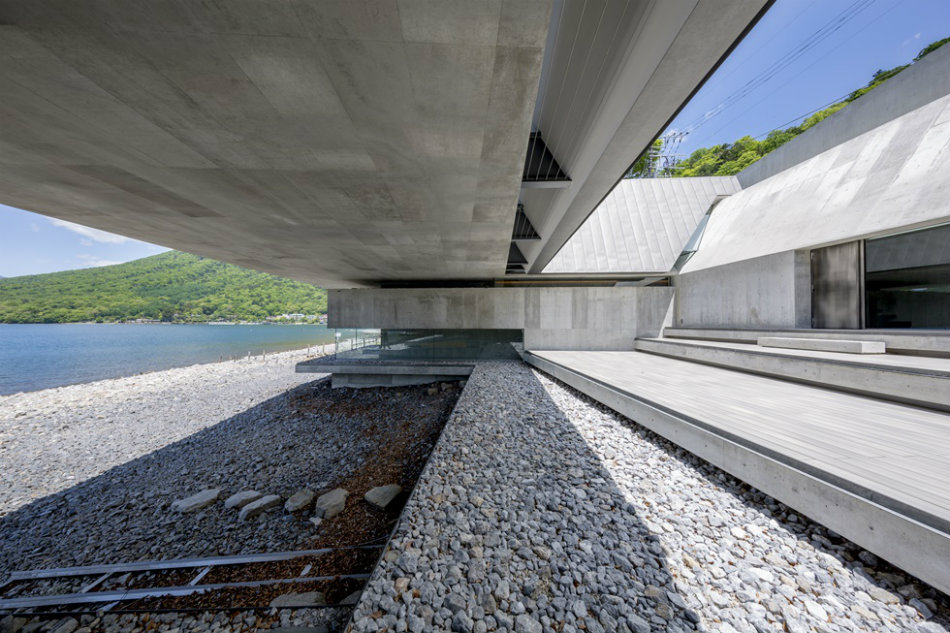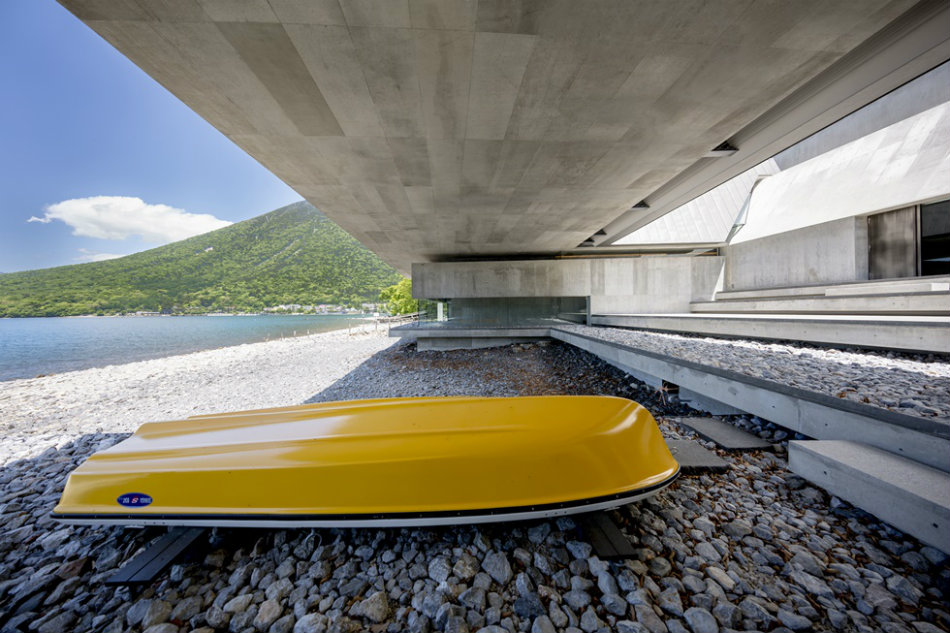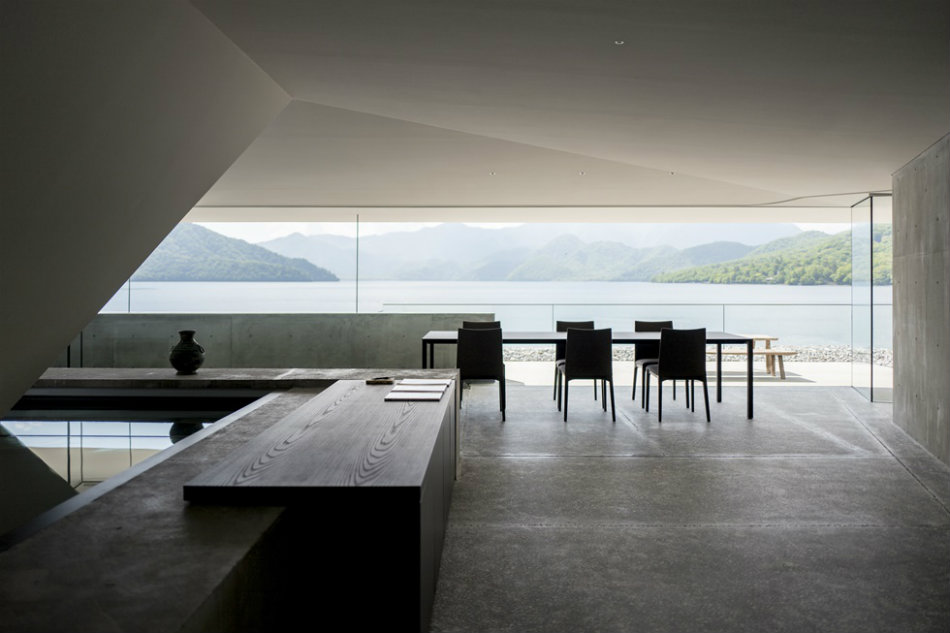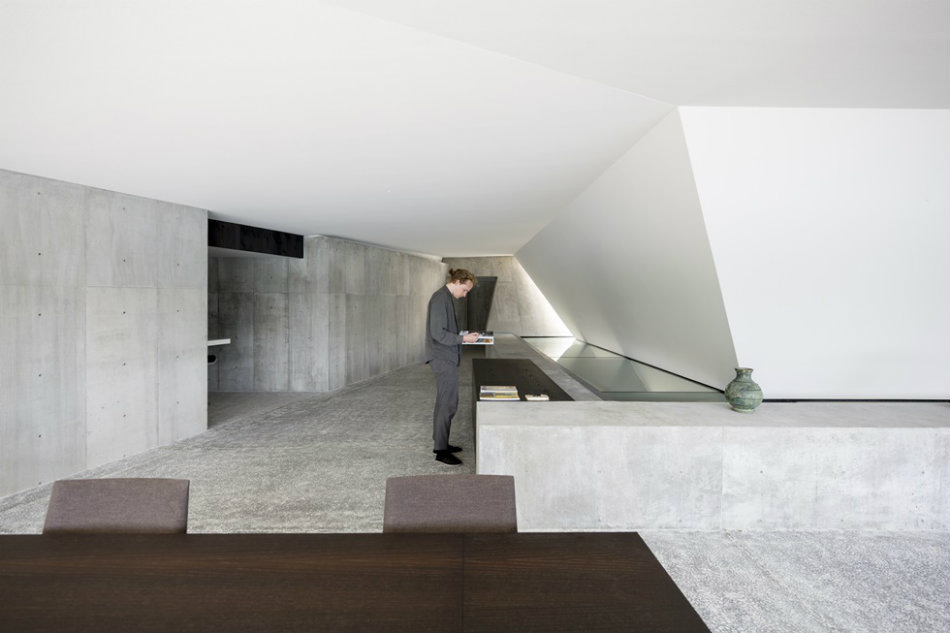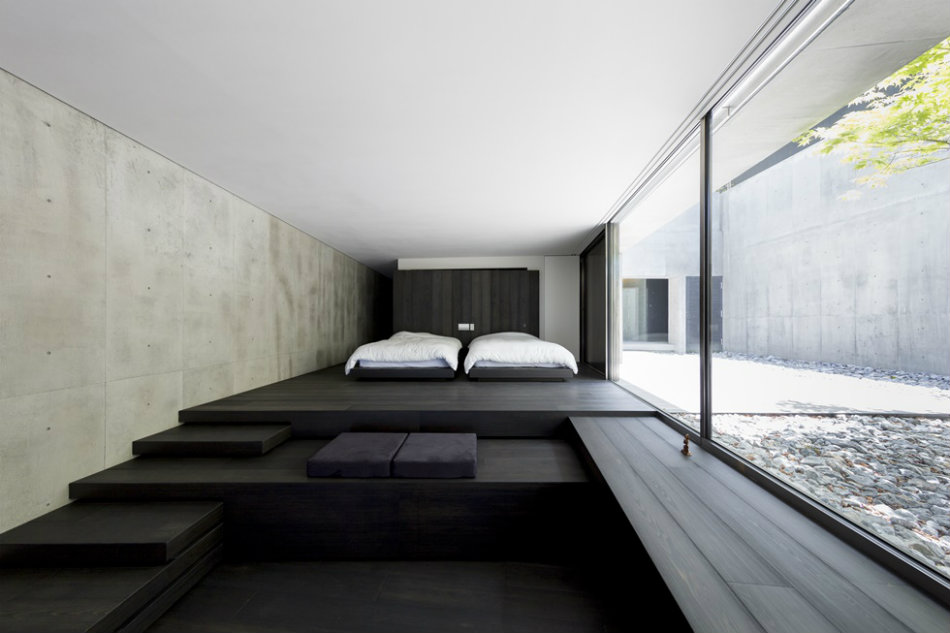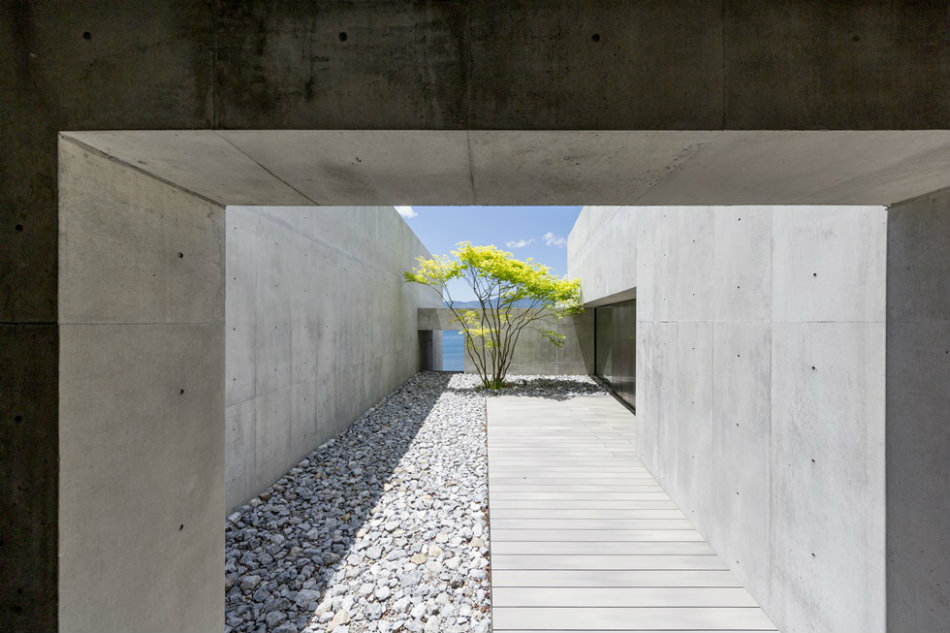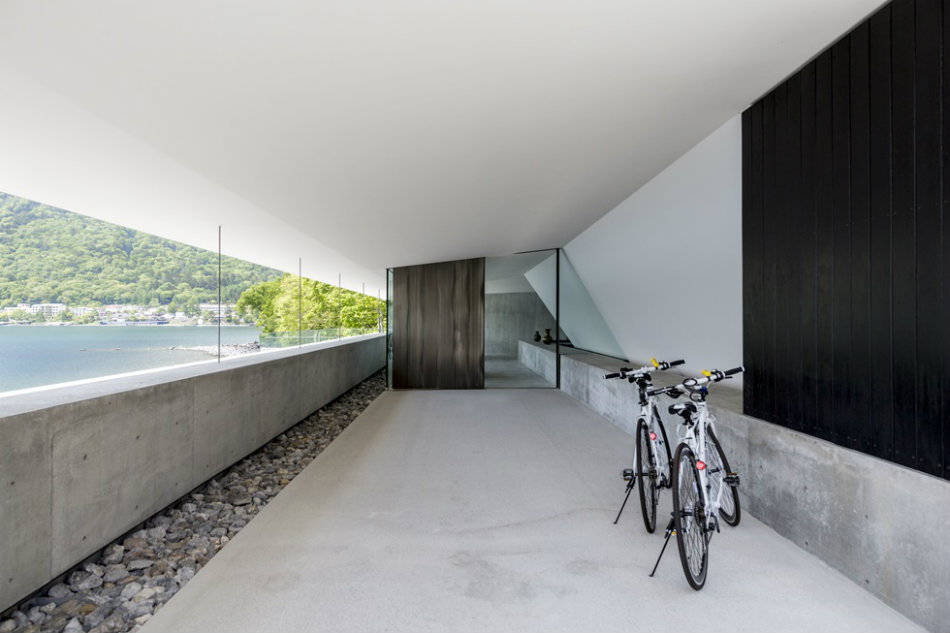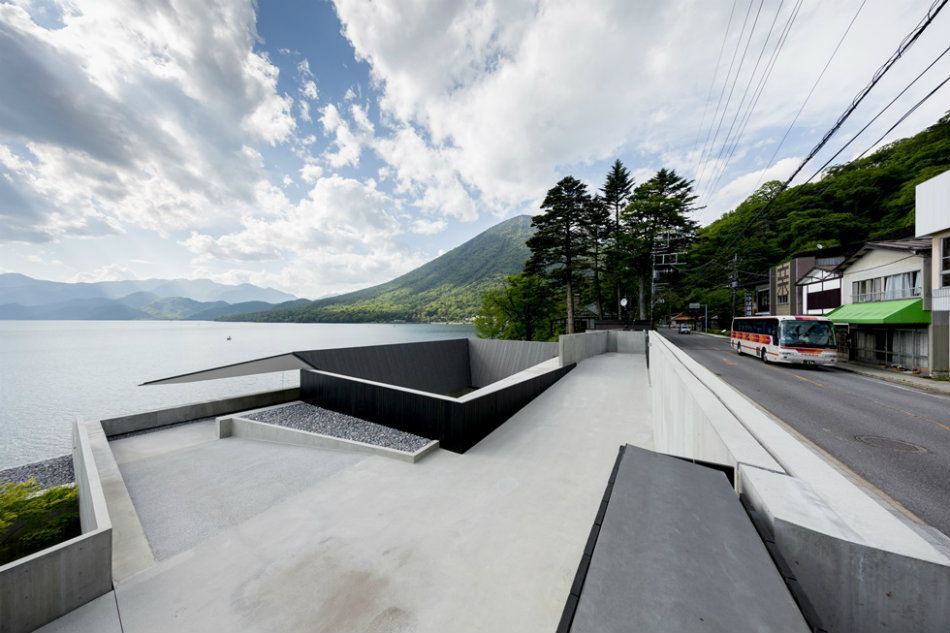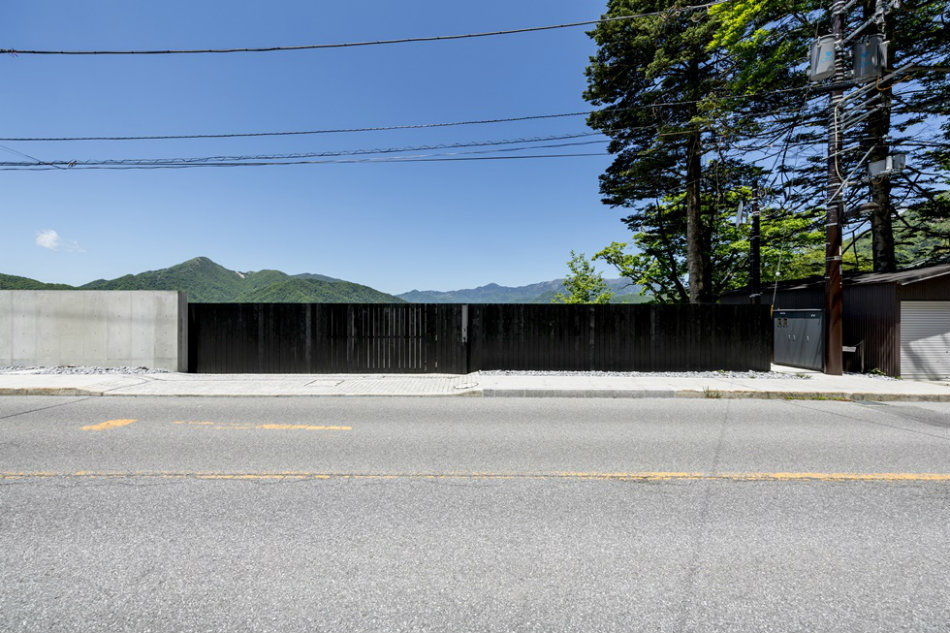The house was an unusual commission for Nikken Sekkei, known for skyscrapers and stadiums. The project was led by Tomohiko Yamanashi, who oversees a 150-person design team and heads Nikken Sekkei’s 40-person technology division. Given the demands on his time, Yamanashi can only take on one such bespoke project each year. The organising principle of the house is ceremony. The client, an executive at a Tokyo-based multinational corporation, entertains business partners at the house, and the architecture helps to choreograph the guest’s experience. Yamanashi adopted a linear scheme to control what the visitor experiences, and in what order, but twisted the plan into a spiral to lengthen the route through the building. He explained the ‘entrance ceremony’ he designed while taking me through the house.
Arriving from Tokyo, usually around 5pm, the client and his guest park behind an entry wall of black stained pine and concrete. An elongated slope leads downward, the house’s cantilevered roof plane superimposed over the landscape beyond. On reaching the entry plane, the guest turns and finds a covered exterior corridor, adding to the sense of procession that Yamanashi borrowed from teahouse entry paths. Before entering, the client and guest often sit on a long concrete bench and have refreshments in the manner of koshikake, waiting spaces that precede entry into a teahouse. The wall and low eaves in front frame the lake and mountain ridge into an extremely horizontal composition.
On entering the house and passing through a foyer, the party arrives in the dining room. Though there is a small kitchen behind a moving wall, Yamanashi explains that the meal is often brought from a nearby hotel.
From the dining table, the guests can view the sunset across the lake through a 10m-wide pane of glass. After dinner, they go down to a bar and sitting room that opens onto a wooden terrace, again looking to the lake. The concrete slabs below are covered with local stones, blurring the base of the house with the rocky shore. From a standing position, the mountaintops are cropped, but this view is meant to be seen from the floor. Several zabuton (floor cushions) are collected near the back wall, and the architect tosses them around the expansive room and suggests lounging wherever comfortable.
BIM was also applied for structural analysis, resulting in a precambered steel roof structure which connects to the slab below using tensile rods. The slab and roof are mutually supportive, and withstand the metre-deep snow loads in winter. Temperatures are extreme enough that On the Water is closed from October to May. The harsh climate provided opportunities though; construction began in winter, taking advantage of low water levels to reduce impacts on the lakeshore.The impact of the building in its context is more complex, but was on the client’s mind from the inception. ‘Nikko used to be one of Japan’s leading summer resorts,’ the client explains. The lake began as a holiday destination when the British Embassy built a villa there in 1896. By the 1920s, Belgium, Italy and France joined the ranks, paving the way for hotels and ryokan (traditional inns).
